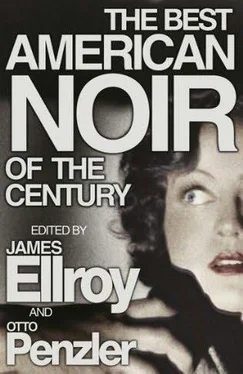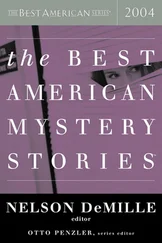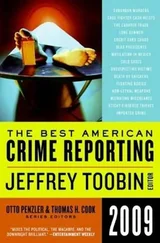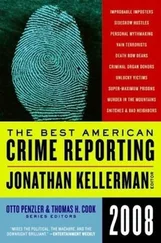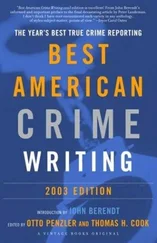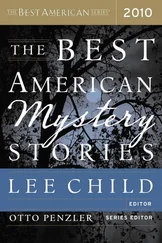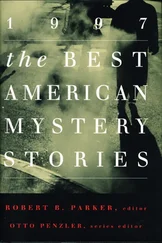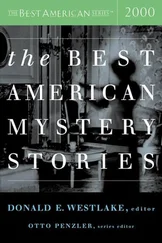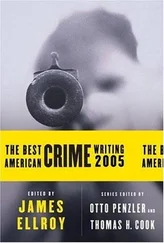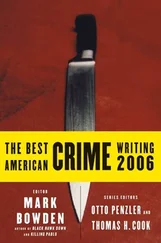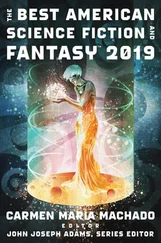Nelson Tare sucked in his breath. “You said I couldn’t shoot, didn’t you, Mister Clyde?”
“You had your chance. Look at Dave there. He’s got a rabbit to take home that he shot himself, even though he didn’t kill it first crack.”
“I can shoot,” said Nelly. He worked a cartridge into the breech of his rifle. “Dave,” he said to me, “you throw up a snowball.”
“Can’t anybody hit a snowball with a twenty-two,” said big Clyde Boston.
Nelly said, “Throw a snowball, Dave.”
I stepped down from the sill of the barn door and made a ball about the size of a Duchess apple. I threw it high toward the telephone wires across the road. Nelly Tare pinked it apart with his .22 before the ball ever got to the wires. Then he went down the road to the creek house, with Clyde Boston and me looking after him. Clyde was scratching his head, but I just looked.
* * *
Nelly began to get into trouble when he was around fourteen. His first trouble that anyone knew about happened in the cloakroom of the eighth grade at school. Miss Cora Petersen was a great believer in corporal punishment, and when Nelly was guilty of some infraction of rules, Miss Petersen prepared to thrash him with a little piece of white rubber hose. Teachers used to be allowed to do that.
But if the pupil did not permit it to be done to him, but instead drew a loaded revolver from inside his shirt and threatened to kill his teacher, that was a different story. It was a story in which the superintendent of schools and the local chief of police and hard-faced old Mr. Tare were all mixed together in the climax.
There was some talk about the reform school, too, but the reform school did not materialize until a year later.
That was after Meisner’s Hardware and Harness Store had been robbed. The thief or thieves had a peculiar taste in robbery; the cash drawer was untouched, but five revolvers and a lot of ammunition were taken away. A mile and a quarter away, to be exact. They were hidden beneath planks and straw in Mr. Barton Tare’s wagon shed, and Chief of Police Kelcy found them after the simplest kind of detective work.
This time the story had to be put in the paper, no matter how much my father regretted it. This time it was the reform school for sure.
We boys in the south end of town sat solemnly on our new concrete curbstone and talked of Nelly Tare in hushed voices. The judge had believed, sternly and simply, that Nelly was better off at Eldora than at home. He gave him two years. Nelly didn’t serve all of that time. He got several months off for good behavior, which must have come as a surprise to many people in Elm City.
He emerged from the Eldora reformatory in the spring of 1918. His parents were out of the picture by this time. His mother was dead; his father had moved to South Dakota with the two youngest girls, and the other girls had married or drifted away.
Nelly may have been under age, but when he expressed a preference for the cavalry, and when he flourished a good report sheet from the reformatory superintendent, no one cared to say him nay. Once he came home on furlough from a camp in New Mexico. I remember how he looked, standing in front of Frank Wanda’s Recreation Pool Hall, with the flashing badge of a pistol expert pinned upon his left breast, and all the little kids grouped around to admire the polish on his half-leather putts.
He never got a chance to use any guns against the Germans. He wasn’t sent to France, and came back to Elm City in the spring of 1919. It was reasonable for him to come there. Elm City was the only real hometown he had, and one of his sisters was married to Ira Flagler, a garage mechanic who lived out on West Water Street. Nelly went to live with the Flaglers.
He began working at Frank Wanda’s pool hall. I have spoken about his skill with his hands; he employed that skill to good advantage in the pool hall. He had developed into a remarkable player during his year in the Army. He also ran the cigar counter and soft drinks for Frank Wanda, who was getting old and couldn’t stand on his feet very long at a time.
It used to be that in every pool hall there was somebody who played for the house, if people came along and really wanted to bet anything. Nelly would play on his own, too, taking money away from farm boys or from some out-of-towner who thought he was good. He was soon making real money, but he didn’t spend it in the usual channels. He spent it on guns.
All sorts. Sometimes he’d have an especially good revolver down there in the billiard parlor with him, and he’d show it to me when I dropped in for cigarettes. He had a kind of private place out along the Burlington tracks where he used to practice shooting on Sundays. And in 1923 a carnival came to town.
* * *
Miss Antoinette McReady, the Outstanding Six-Gun Artiste of Two Nations, was supposed to come from Canada. Maybe she did. They built up a phony Royal Canadian Mounted Police atmosphere for her act. A fellow in a shabby red coat and yellow-striped breeches sold tickets out in front. An extra girl in the same kind of comic uniform assisted the artiste with her fancy shooting. They had a steel backstop at the rear of the enclosure to stop the bullets. I went to the carnival on the first night, and dropped in to see the shooting act.
The girl was pretty good. Her lady assistant put on a kind of crown with white chalks sticking up in it, and Miss McReady shot the chalks out of the crown quite accurately, missing only one or two shots and not killing the lady assistant at all. She did mirror shooting and upside-down-leaning-backward shooting; she balanced on a chair and shot. She was a very pretty redhead, though necessarily painted.
Then the Royal Canadian Mounted manager made a speech. He said that frequently during her extensive travels, Miss McReady had been challenged by local pistol-artists, but that she was so confident of her ability that she had a standing offer of one hundred dollars to anybody who could outshoot her.
The only condition was that the challenging local artist should agree to award Miss McReady an honorarium of twenty dollars, provided she outshot him.
Nelly Tare climbed up on the platform; he showed the color of his money and the bet was on.
Miss Antoinette McReady shot first, shooting at the tiny target gong with great deliberation; she rang the gong five out of six times. Nelly took her gun, aimed, and snapped it a few times before ejecting the empty shells, to acquaint himself with the trigger pull. Then he loaded up, with the whole audience standing to watch him. He fired his six rounds, rapid fire, and everyone yipped when he rang the gong with every shot.
Miss Antoinette McReady smiled and bowed as if she had done the shooting instead of Nelly; she went over to congratulate him. They got ready for the next competition. The girl assistant started to put on the crown thing with its chalks sticking out of the sockets. Nelly talked to her a minute in a low voice; he took the crown and put it on his own head.
He stood against the backstop. His face was very red, but he stood there stiff at Army attention, with his hands against his sides.
“Go ahead, sister,” he told Miss McReady.
Well, they made him sign a waiver first, in case of accident. You could have heard an ant sneeze in that place when Miss McReady stood up to do her shooting. She fired six times and broke four of the chalks. The people in the audience proceeded to wake up babies two blocks away, and Miss Antoinette McReady went over to Nelly with those little dancing, running steps that circus and vaudeville folks use. She made him come down to the front and take applause with her. Then she said she’d wear the crown for Nelly, and this time there was no waiver signed.
Читать дальше
Конец ознакомительного отрывка
Купить книгу
